Before travelling to Japan, everyone makes a big deal of how to behave correctly in Japan – because it’s so different.

I really don’t know why everyone emphasizes how different Japan is. Because – different from what? Like everything else in life, different is very relative.
- Culture Clashes
- Living by the Rules
- Do Not Blow Your Nose in Public
- Do Not Eat Or Drink in Public
- Stop for the Sip
- Do Not Speak Loudly in Public
- Turn Off Your Cellphone on Public Transportation
- Mind Your Baggage
- Stand in Line
- Do Not Jaywalk
- Enter the Bus Through the Backdoor
- You’re Right on the Left
- Take Your Shoes Off
- At Restaurants
- Smoking
- Alcohol
- Onsens
- Comicbooks
- Anything Else?
- Pinnable Pictures
Culture Clashes
When I got to Sri Lanka not long ago, on my first train ride I was sitting in front of a lovely old gentleman who was wearing a sarong – yes, that’s basically a wrap skirt – and eating rice with curry sauce with his fingers from a sheet of newspaper.
Let me tell you, that was pretty different from what you see on trains in many other parts of this world.
So why didn’t anybody whisper full of intimidation Oh, you’re going to Sri Lanka. Well, that must be so different?
Japan is pretty hyped in this sense. I think it’s because foreigners are expected to adapt to customs and rules right away.
Nobody would expect a European traveller to put on a wrap skirt and eat curry sauce with his fingers from a newspaper sheet.
Yes, good behavior varies from region to region, manners differ, and rules and regulations are diverse.
In any case, in Japan, you are expected to do it the Japanese way.
That’s why I wrote down how to behave in Japan – or not.
Living by the Rules
In Japan, there are many written and spoken rules – and even more unwritten and unspoken ones.
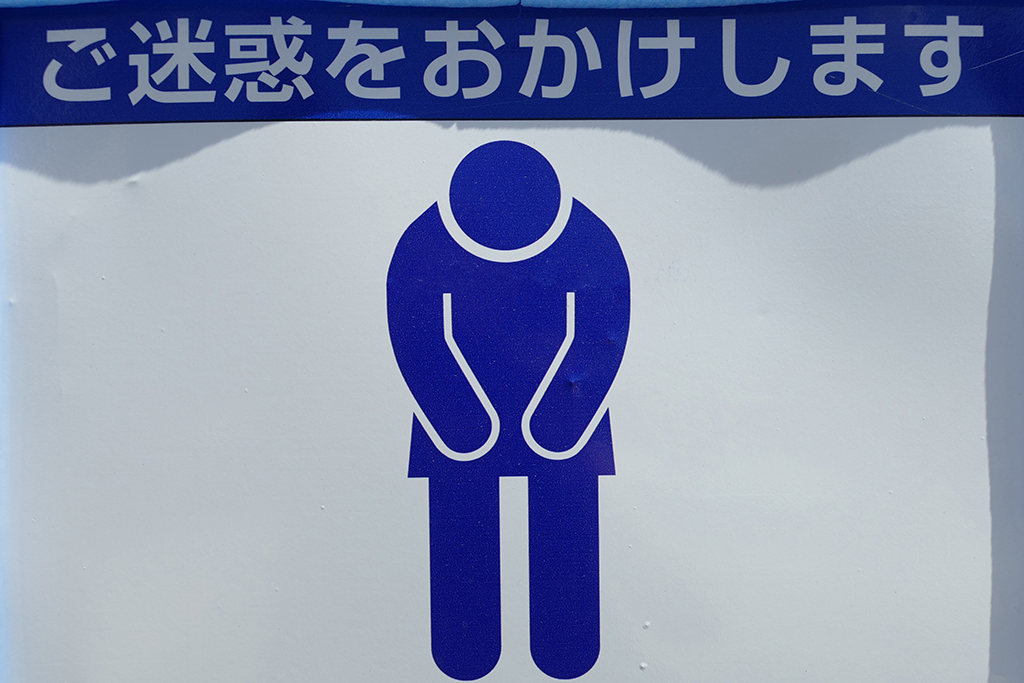
However, Japanese people are far too bashful and polite to point out that you are about to transgress one of those rules.
If you keep your backpack on in a train, they bark at you in Italy.
When jaywalking, they point at you in Germany.
As you eat on the bus, they roll their eyes at you in France.
None of this will happen in Japan.
But don’t think people won’t notice.
You’ll be the boorish ugly tourist.
Yes, apparently, they will let it go.
But on the inside, they will mutely bark, they will invisibly point and imperceptibly roll their eyes.
Do Not Blow Your Nose in Public
As a matter of fact, I’m starting with the hardest one for me – which at the same time is one of the biggest taboos: Blowing your nose in public.
To Japanese People, blowing your nose – let alone noisily – is like spitting snot or farting or…doing something really gross. It’s simply disgusting.
On the other hand, snuffling is acceptable – and that would be something I find really, really gross. But I’m European.
So, like they say: When in Japan, do as the Japanese do!
Snuffle as much as you please, but don’t blow your nose in public.
Do Not Eat Or Drink in Public
Another thing you don’t do in public – or at least not while you’re walking around – is eating and drinking.
It’s funny that in a country where they sell so much street food, convenience food, and all sort of snacks practically everywhere you go, you’re not supposed to eat it….on the go.
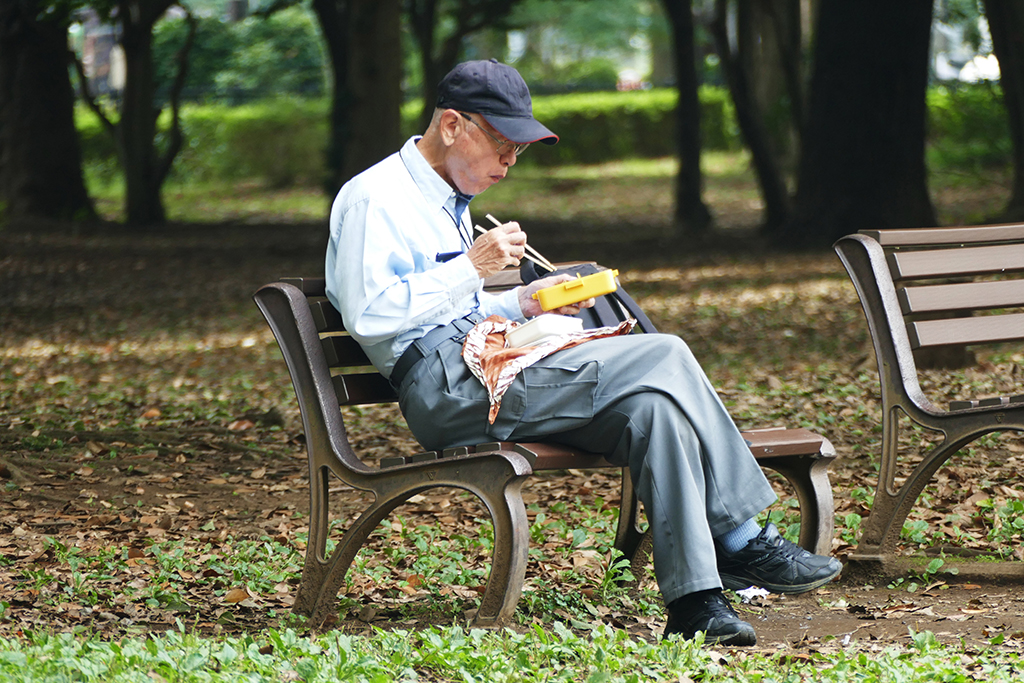
You have to eat your snack either at the store where you bought it – actually, all the convenience stores have a quiet corner with seats or benches where you can sit down and eat what you’ve just purchased. Or you take it for instance to a park and eat it on a bench.
Stop for the Sip
The point isn’t not to eat in public spaces. You’re not supposed to do it while walking around.
I must admit that I broke this rule a little bit and did drink from time to time discreetly from my water bottle. It was extremely hot and I’m sure that fainting while walking around would also be considered bad behavior; to me, it was one or the other.
However, maybe taking a sip of water while walking on the street wasn’t strictly Japanese, but as I said, I did it discreetly when I was really thirsty.
What I found very disrespectful was the clique of Brazilian girls who entered a bus in Nara, sitting down on different benches around the bus so that they had to yell at each other, each of them holding a cup with an iced coffee in their hand, shaking it around like you do shake a cup with ice cubes….but ladies, not on a Japanese bus!
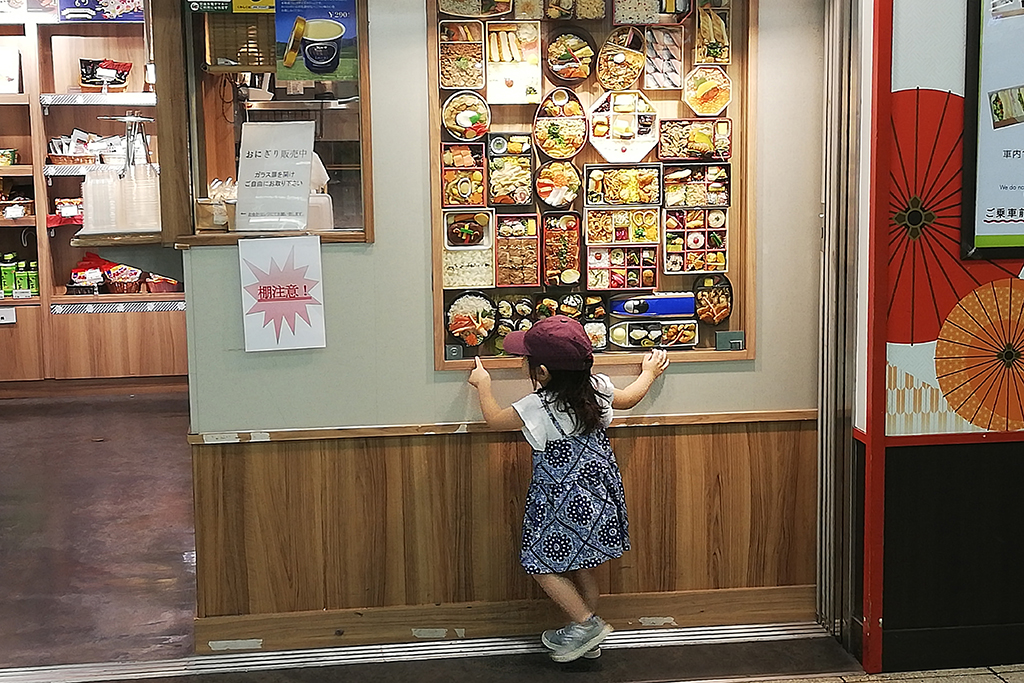
Eating and drinking are also not permitted on commuter trains while on long-distance trains like the Shinkansens, where you also have a small table, it’s totally fine.
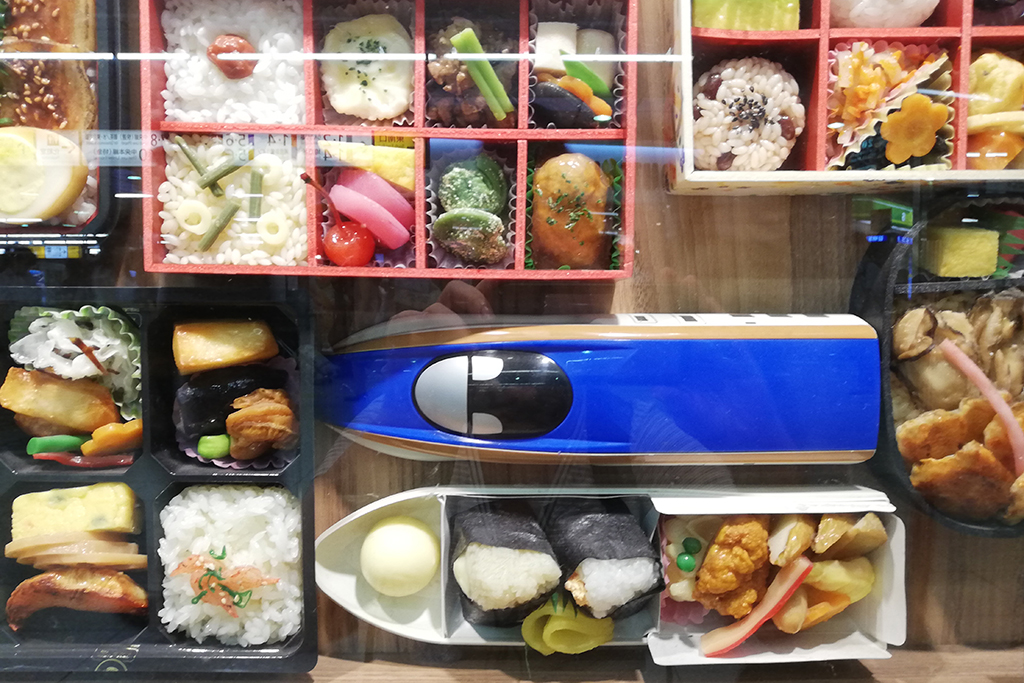
There you can either bring your own Bento that you can purchase in an incredible variety at the station and even on the platforms, or you buy something from the little pushcarts on the train.
Do Not Speak Loudly in Public
Riding trains – this brings me right to the next point: No loud conversations in public, no loud conversation in means of public transportation.
There are so many people everywhere you go in Japan, however, it is really quiet. All you hear are murmurs – apart from terrible noises like from computer games coming from each and every machine or speaker; and there are many of those around Japan, take it from me.
Loud human conversations are disturbing, nerve-wracking beeps, toots, rings, and other horrible machine-made noises are a-okay.
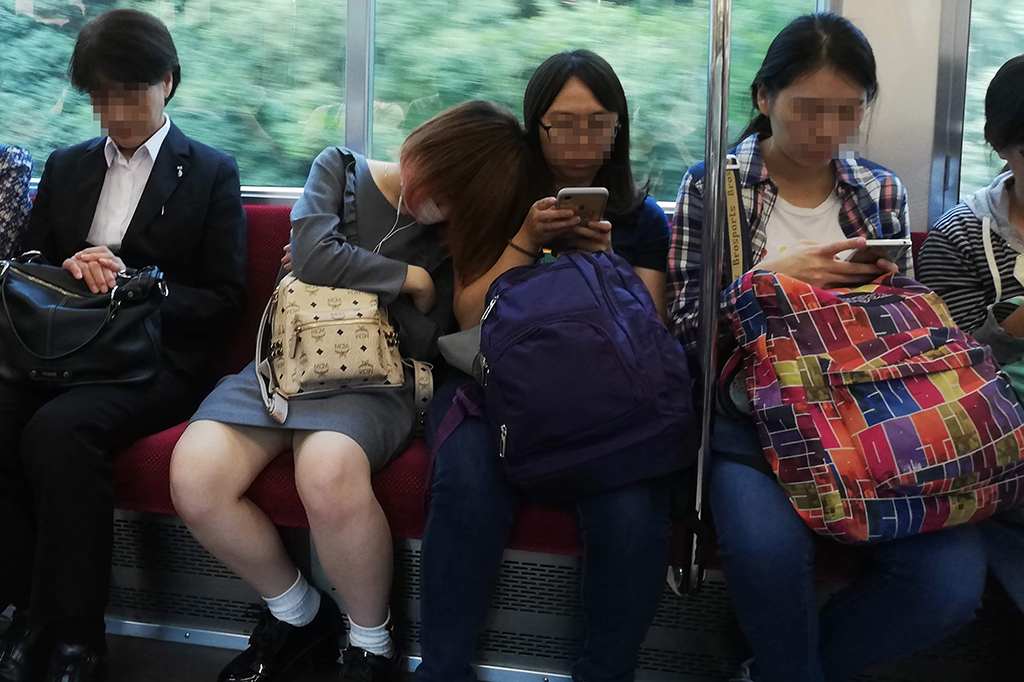
Anyway, raising your voice is considered rude, letting the entire wagon participate in your conversation is deemed obnoxious – just lower your voice.
Remember: Silence is golden!
Turn Off Your Cellphone on Public Transportation
This brings me to my favorite Japanese rule: No cell phones on public transportation. At least no conversations on cell phones. At all. Even not whispering.
Also, you are requested to put your phone in silent mode.
I cannot stretch enough how I enjoyed this rule!
However, on my trip from Kawaguchiko to Shin-Yokohama, a French-speaking gentleman was blaring into his phone. I really wonder how he hadn’t noticed that nobody else on a full, sold-out train was talking on the phone. How could he be so oblivious to the turning heads?
Albeit Japanese civilians are far too polite and discrete to actually say something, as the lovely conductress passed by, she summoned him in her sweet, charming way to cut it out – immediately.
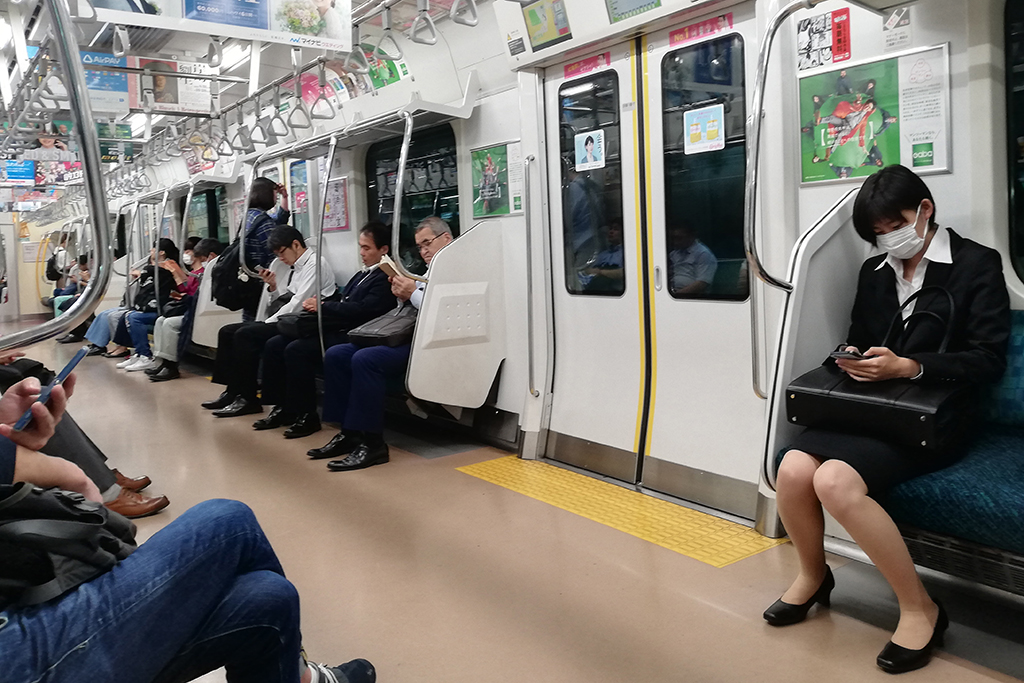
I must admit that I have a pretty loud voice. And a big mouth. Usually, I’m loud, rude, and obnoxious. However, in such quiet, discreet surroundings, I automatically become a quiet, discreet person.
I’m not exactly chirping – I just shut up.
It’s remarkable that this noiseless atmosphere doesn’t have this impact on everyone.
So, people, just zip it and turn your phones to silent mode.
This way you also hear the beeps, toots, rings, and other horrible machine-made noises clearer.
Mind Your Baggage
All these Japanese customs are supposed to make the coexistence and communal life of those many people in a relatively small space agreeable for everyone.
Since there is so little individual space, at least make sure to leave the little there is to your fellow men and women and try not to invade their space as well as you can.
One of these space-respecting rules is to keep your luggage in a spot where nobody has to climb over it.
Also, be careful not to bump into people.
And most importantly: Take your backpack – no matter how small it might be – off your shoulders and hold it in your hands as soon as you board. Have it under control.
On many subways and local trains, you’ll notice racks above the seats. These are actually being used: People put their bags up there so all passengers – and also themselves – are more comfortable.
You might want to try that, too.
Stand in Line
Again: Japan is a relatively small, densely populated space. Therefore, everything is well organized and procedures are quite efficient. However, since there are so many people, you have to wait in line. Often. For basically everything.
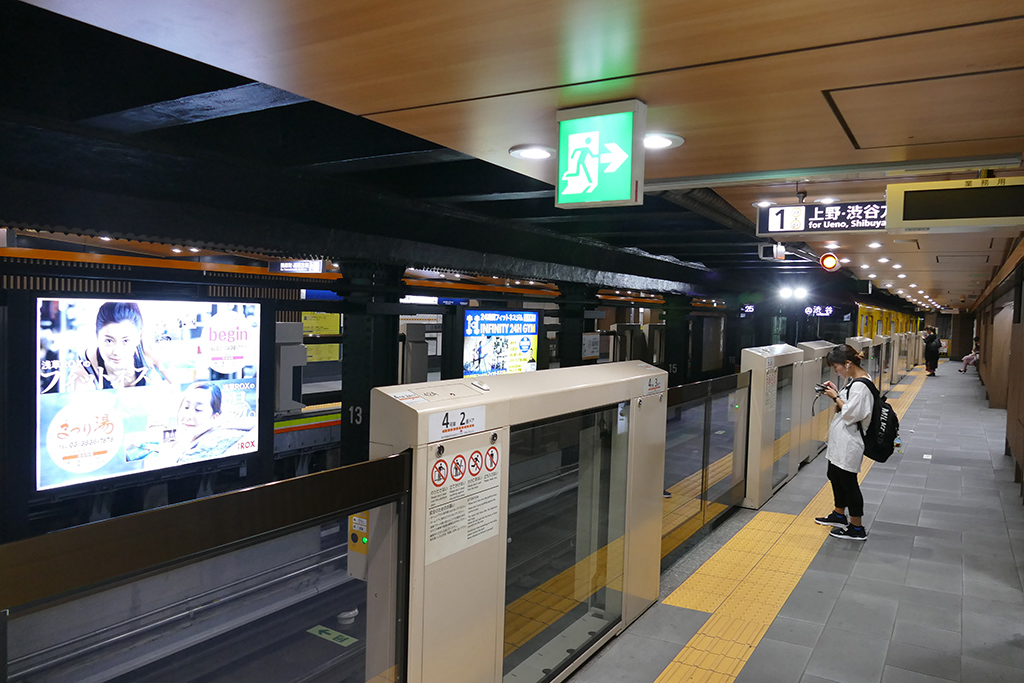
Either it’s because the Japanese are used to it or because of their Zen attitude: They wait in line patiently – without pushing, cutting, getting nervous, or annoyed.
I’m not pushing, I’m not cutting – but I’m getting nervous, I’m annoyed.
It. Drives. Me. Berserk.
The best I can do is not to show it.
I patiently stand in line.
Do Not Jaywalk
As I admitted above, I’m a very impatient person. If I have to wait for two minutes, I feel like wasting my life away. Waiting at a traffic light is no exception to this; whereby I’d like to point out that I’m a pedestrian, not a driver.
Hence the only person I put in danger by not respecting traffic lights all the time is me.
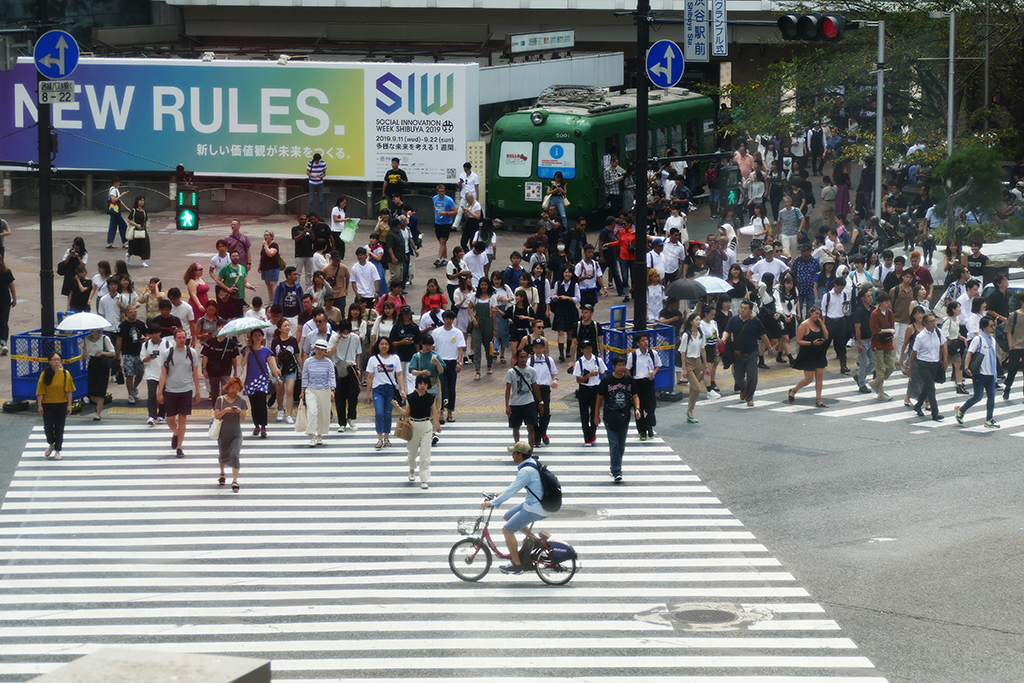
Now in Japan, this is unthinkable no matter what.
If you have to cross a narrow sidestreet at four in the morning in a small town – you are expected to wait for the green light. No matter what.
Enter the Bus Through the Backdoor
No, I hear you groaning, there aren’t rules for riding the bus!?
Yes, there are – but they are not very hard, just a bit unusual. In general, you are not entering through the front door and paying the fare as you begin your trip.
You enter through the backdoor and only as you alight, you pay at a little machine next to the driver – you are requested to have the exact fare.

I find this strange. Everywhere else I’ve been before, you pay as soon as you get on the bus.
You pay practically in advance – probably in order to guarantee that you pay at all.
Because what will the driver do once you get to your destination and cannot pay him?
Will he drive you back to where he picked you up?
Anyway, I assume dodging the fare doesn’t ever happen in Japan, most Japanese don’t seem to have much criminal potential.
I Have a Question
A disadvantage that comes with this system for us foreigners is the fact that you cannot ask the driver e. g. for your final destination while you’re boarding the bus.
Instead, you are standing at the front door, being an obstacle for the disembarking passengers, shouting your question over their heads.
Then, if it’s the right bus and you want to hop on, you have to pace back to the back door to board from there.
To me, this system is not convincing. But who cares as long as in Japan, it is a success story.
You’re Right on the Left
I’m surprised time and again at how many countries there is left-hand driving. Actually, it is in more than one of four. And Japan is one of those.
Not only do Japanese drive on the left. They also walk on the left and stand on the left-hand side on escalators. And they expect the same from you.
Just a couple of days and walking on the left feels right.
You adapt and don’t risk being run over by a car as soon as you set foot on the street anymore.

And then you come to Osaka.
Obviously, cars are still driving on the left – but for no apparent reason, standing and walking are like at home: On the right side.
And for a couple of days, you’re the moronic alien all over again.
Those Japanese are always good for a little surprise and keeping you on your toes.
Take Your Shoes Off
Talking bout toes brings me to the whole shoe issue.
Japan is by far not the only country where it’s customary – I would go so far as to call it crucial – to take your shoes off when entering a private home.
Actually, I like that a lot and my visitors have to leave their shoes on my doormat, too.
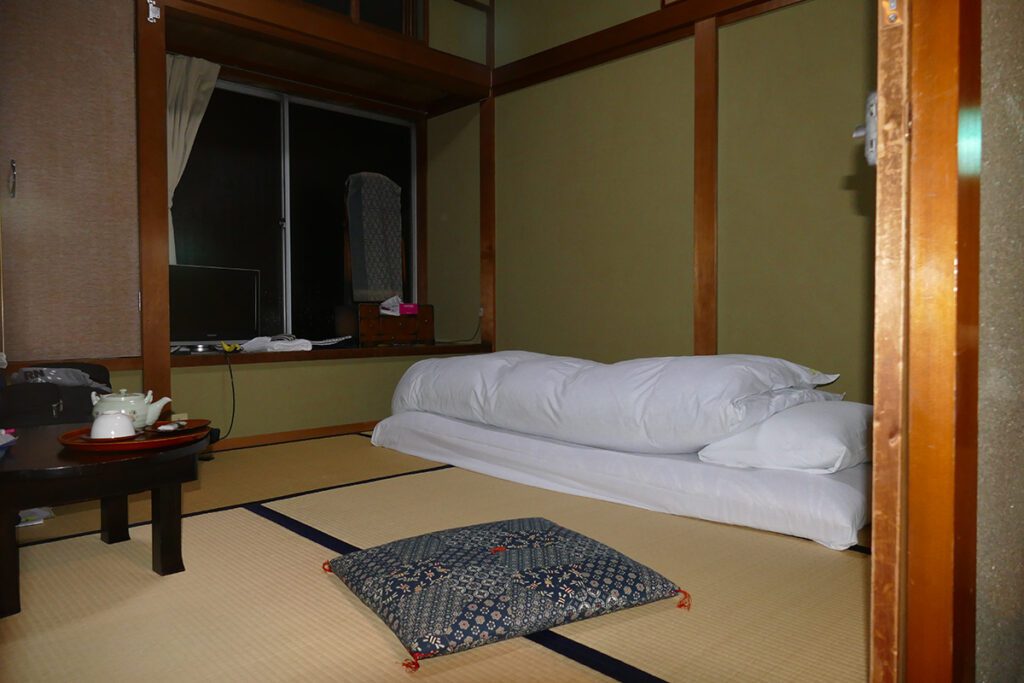
Japanese, however, take it to a whole different level: There are not only temples and other sacred places where you have to take your shoes off, but also stores, tea houses, and restaurants.
To my European mind, this is not necessarily the more appealing and sanitary way – and the smell at some of the temple entrances where the shoes are stored proves my point.
Slippers
When I was in Japan, it was hot and I was wearing sandals all day long, so when I had to take off my Birkenstocks and leave them at the shoe storage at the restaurant in Hiroshima, I was good.
No nasty smell.
But how is it when a person with really sweaty, smelly feet has to take her or his boots off in wintertime?
Maybe I even don’t want to know.
Also, just taking your street shoes off at the door and putting on house slippers is not the only drill.
In many households, there are special bathroom slippers at the toilet door. So before going to the bathroom, you take off your house slippers and put on the bathroom slippers.

And if you’re with your head in the clouds or just had a few, you’re prone to forget to change back into the regular house slippers and the joke’s on you.
It’s not easy to be well-behaved in Japan.
At Restaurants
So you have clean feet, smelling of roses, you take your shoes off and….now beware of the figurative stumbling blocks to come.
This won’t be new to US Americans, but in other countries, it is not always customary: You don’t storm into a restaurant and throw yourself on the most appealing table. No, you wait to be seated. By the way, if you go for supper at a busy hour, be prepared to wait for a table. I know that in metropoles like Paris, London, or New York, this is normal; to me, it’s torture.
Anyway, so once you are seated and you ordered your food, you’ll get free water or green tea. Also normal in the US, but not necessarily normal in the rest of the world.
What’s very different from the US is that the waiter does not come until you give him or her a sign. Sometimes it’s even a discreet bell, sometimes you make yourself noticed by raising your hand.
And also once you have your food, you won’t be asked every five minutes if everything is okay or if you need something else. At the end of the meal, you won’t know the waiter’s name and what his hobbies are.
Rather European style. Very different from the US.
Chopsticks
So you’ll get your food and you’ll get chopsticks. Unless you’ve ordered Okonomiyaki, the so-called Japanese pizza. For this dish, they supply you with some sort of special spatula.
So chopsticks.
What you do not do is rub them against each other. This is considered rude since it signals that you don’t trust the quality.
Then, you don’t drum with them – you’re not five years old, anyway
Keep in mind that these sticks are cutlery – you wouldn’t fool around with your knife and fork, either, would you?
Mmmh, this is good! Wanna try? Here you go!, and then you do not forward food from your chopsticks to your companion’s chopsticks. If you want him to try your food, he has to take it with his sticks from your plate. Chopsticks-transfers are a no-go.

That was so good – and plenty! I’m full!, and you ram your chopsticks straight into your rice bowl.
Oh my God!
Take them out, and do it quick: Sticking chopsticks vertically into a bowl of rice is part of a funeral ceremony and extremely disturbing for Japanese people.
Yay And Nay
While most of the points I’m listing here are avoidances, there are actually behaviors in Japan that are totally acceptable. For instance slurping. I mean, how else could you eat long noodles with chopsticks from a broth?

You put one end in your mouth with the sticks and then you slurp them. To make it easier, you are even allowed to pick up the bowl and hold it in your hand at the most convenient angle. And in the end, you are allowed to drink the broth from the bowl.
Paying And Tipping
In most Japanese restaurants, you don’t pay your waiter, you rather pay at the cash register. And that’s probably one of the reasons why you don’t tip.
Some people even claim it’s insulting, others say it’s rather confusing. I don’t know about that, all I know is you just don’t do it. For no service. Excellent service is taken for granted, not something that has to be rewarded.
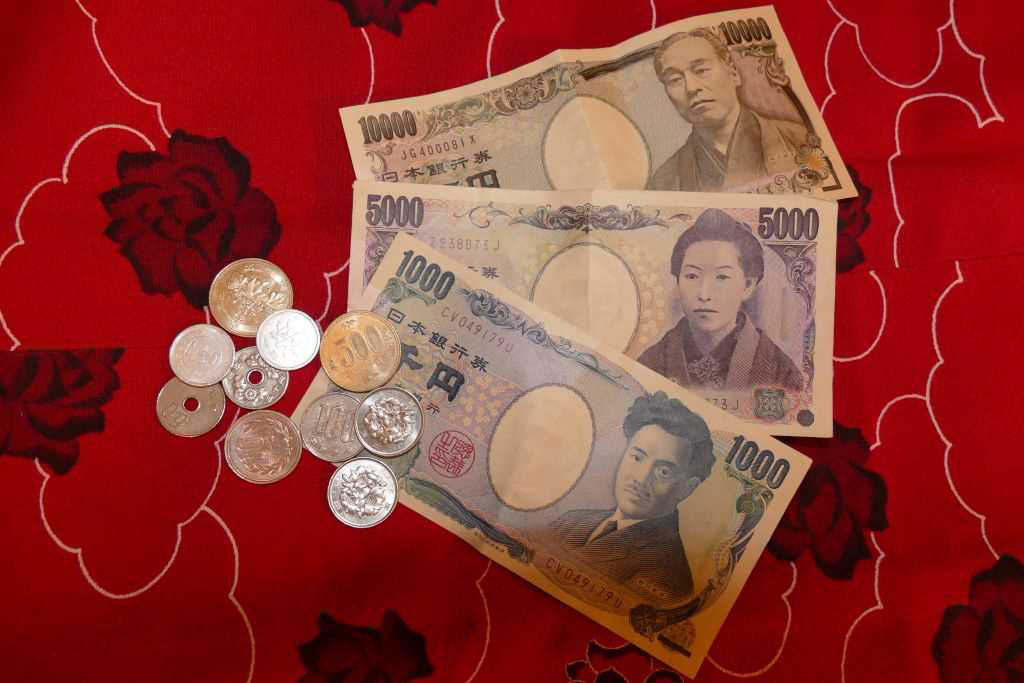
If you are invited for food or drinks, you are actually invited, don’t insist on paying.
If you are having drinks with Japanese, you never fill your own glass. You pour everyone else’s drinks and someone will take care of yours.
Smoking
Actually, I don’t need to prepare you for that since Japanese authorities make it pretty clear where you are allowed to smoke and where not.
In general, it’s not allowed to smoke on the street or in parks and other greeneries – except in clearly designated areas.

On big train stations, smokers squeeze together in a big cloud of smoke glass cabins.
Interestingly, many restaurants have a smoking section, however, that area is always a hermetically closed space. Also, it must be amazingly ventilated: I’m pretty allergic to cigarette smoke, but when someone opened the door to the smoking section, I never ever smelled a whiff of smoke.
Alcohol
Japanese authorities – and Japanese people – are quite chilled when it comes to alcohol.
The Japanese after-work bar crawl with the boss is legendary. But I was also sitting next to a smart businessman who enjoyed a beer from a can on a Shinkansen.
Not only the supermarkets, but also all the konbinis, the convenience stores, are selling an incredible variety of beer, partly mixed with strong booze. Tastes like rubbing alcohol.
They also have wine, sparkling wine, and sake.
The legal drinking age is 20 and I’ve heard that you always have to show your ID.
I don’t know if it was because I’m clearly over 20 or if they aren’t that strict after all, but I never had to show anything. I only had to confirm by clicking a button at the cash register that I was old enough to legally finish the day with a glass of wine in my hotel bed.
Onsens
A traditional Onsens is a communal SPA at a hot spring. It’s large basins filled with hot thermal water that is shared with other guests.
You find a more modest version of Onsens at the Ryokans, the traditional Japanese guest houses. Here, it’s large bathtubs that are shared per party or family. You can lock the bathroom door while you’re in there. Some Ryokans have even more than one unit for their guests.
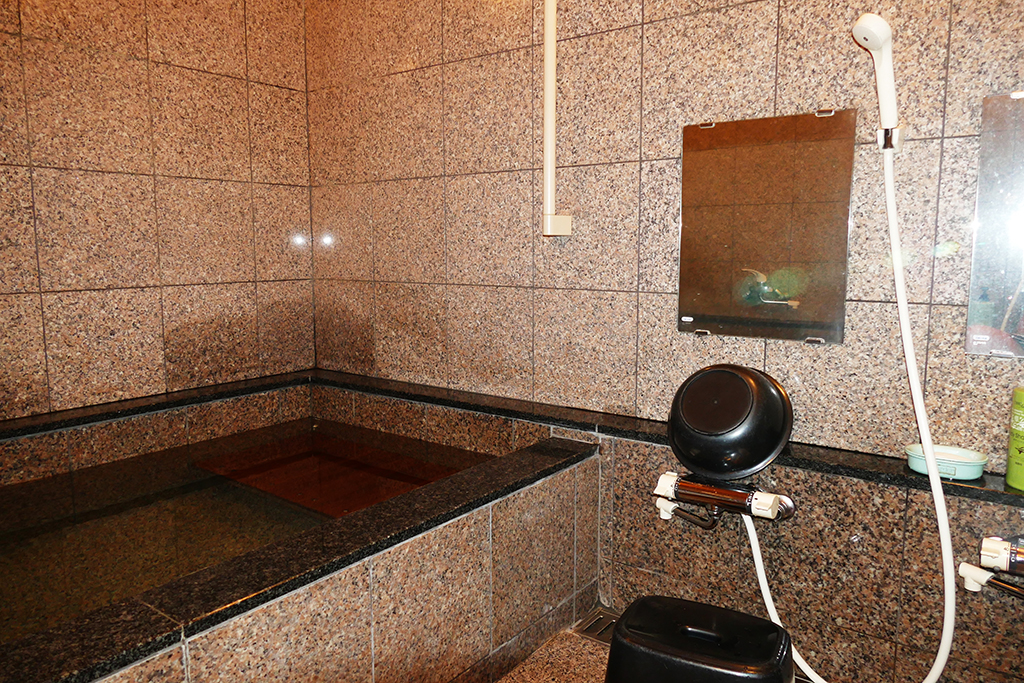
You should consider that an Onsen is for relaxation, not for cleansing! Therefore, before enjoying your bath, you need to shower and clean your body thoroughly – the water at the Onsen is being used by everyone, therefore, you shouldn’t contaminate it. Make sure to rinse off all soap’n’shampoo before laying in the Onsen’s hot water.
You have to take your bath totally nude, you’re not supposed to take any towel or the like with you in the water. Also, after your dip, you’re not supposed to pull the plug. The water is not being changed after each bather.
No Tattoos
One indication: Most communal Onsens do not receive guests with tattoos. If you have a small one, you can cover it with a special band-aid. If you are covered – with tattoos, that is – then you might be denied access. However, some Onsens do not have this restriction, and at the private Onsens it shouldn’t be a problem, anyway, since you are using the bath by yourself respectively only your travel companions.
The reason for this anti-tattoo policy is that tattoos are related to the Yakuza, the Japanese mafia. Many people still think that a person who is tattooed has committed some sort of crime.
Some dermatologists think so, too.
Comicbooks
Japan is not the only place in the world where reading comic books is not only something for small kids and maybe Sheldon Cooper. Especially France and Belgium have a highly developed, artistic, intellectual bande dessinée culture that has nothing to do with trashy funnies.
Clearly, Japan is famous for comic books and has exported Manga and Anime to the whole world.
Still, it is irritating seeing adults reading comic books on the subways, especially since many of them have some pretty X-rated content. To be clear: In Japan, it’s totally okay to read porn comics – no need to hide them between the pages of the New York Times.
Anything Else?
So this is my list of don’ts – and very few do’s – for your Japan trip.
Have you been to Japan?
Which cultural differences have you noticed there?
If you have something to add – hit me, I and the other readers will be grateful for helping to make this list more complete.
In this post, you can read about all the beautiful places I’ve visited in Japan.
Pinnable Pictures
If you choose to pin this post for later, please use one of these pictures:

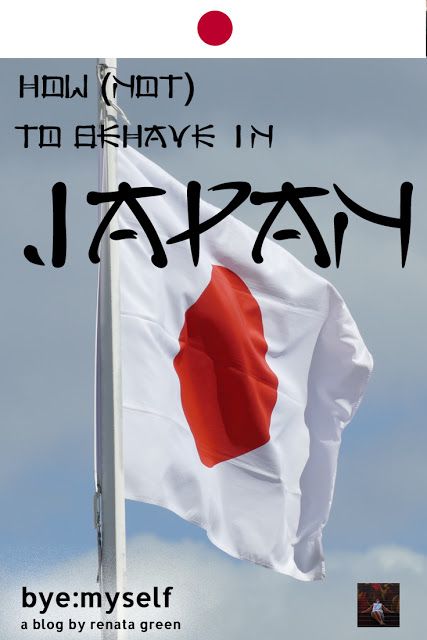
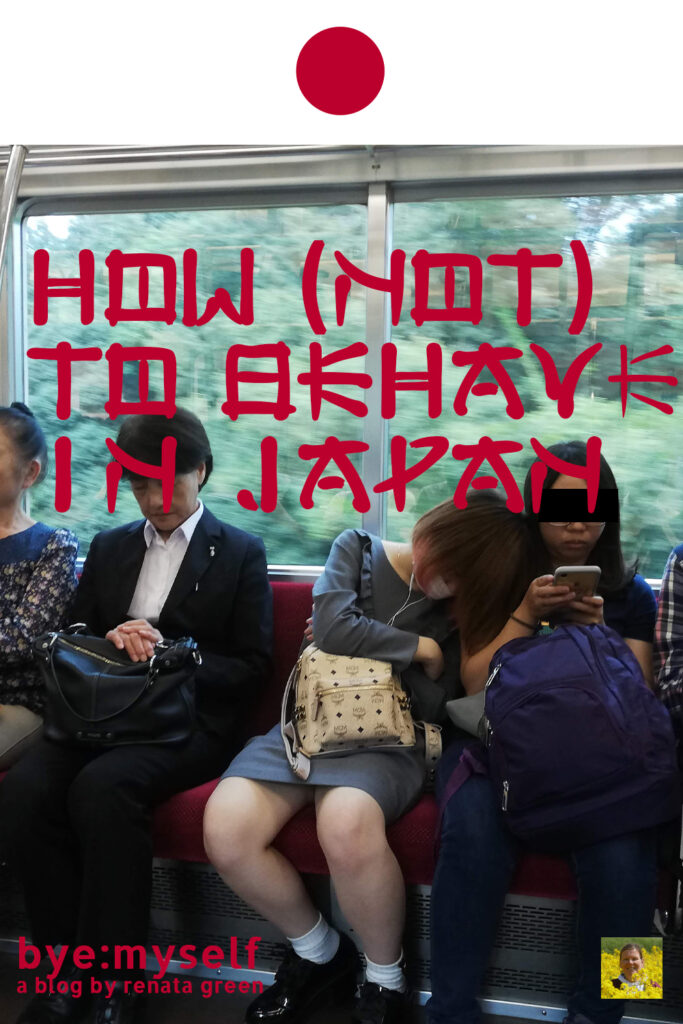
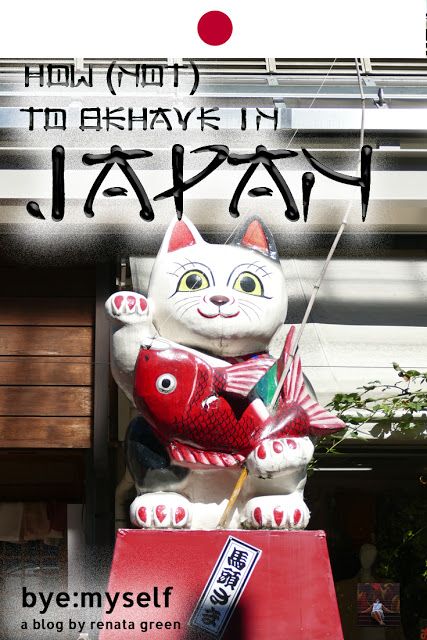
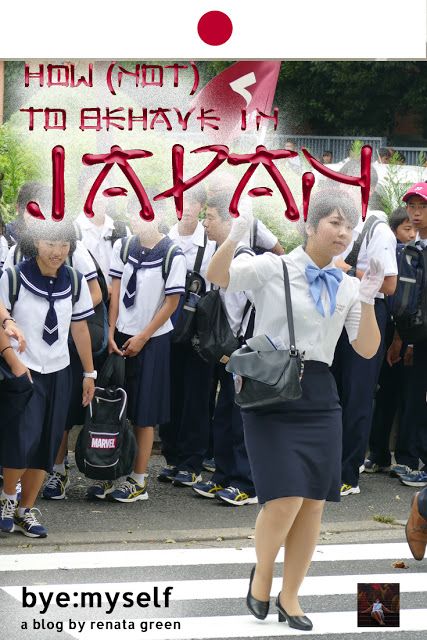

Did You Enjoy This Post? Then You Might Like Also These:
4 Days in KYOTO: A Guide to Japan’s Treasure Box and a Side Trip to NARA
HIROSHIMA – risen up from the ashes; and a side trip to MIYAJIMA
How (not) to behave in JAPAN
JAPAN. An Adjustable Guide for First-Timers
KAWAGUCHIKO – Taking a Shot at Mount Fuji
OSAKA – the commercial metropole; and a side trip to HIMEJI
A Visit to the HAKONE OPEN AIR MUSEUM – at the height of beauty
What (not) to pack for JAPAN
Note: This post is being regularly completed, edited, and updated – last in October 2022.
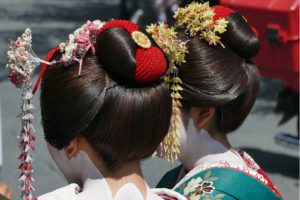







Wow. This is fascinating. Some of the rules are basic ones I grew up with in the U.S. They are just basic respect for others in public spaces. But some of the eating rules and bus ettiquette are things I never would have known. Very useful article.
This is really interesting. I always think we have to follow the traditions of one place whenever we go, not pushing our traditions to be accepted. I found the Brazilian girls attitude were rude, even everywhere in the world if they go like that. And it’s weird also about no eat or drink while walking. Eating is probably fine, but drinking?
I must admit that I violated the drinking rule many times – it was far too hot and I needed lots of water.
It*s actually a nice and useful piece of information. I am so glad that you shared this helpful info. Please keep us informed like this. Thanks for sharing.
Glad it’s useful to you. Moving around in Japan can be a bit tricky at first, so…. 🙂
Thanks for this guide, this kind of info is so important to know when visiting a country in Japan where the culture is so different to what I’m used to!